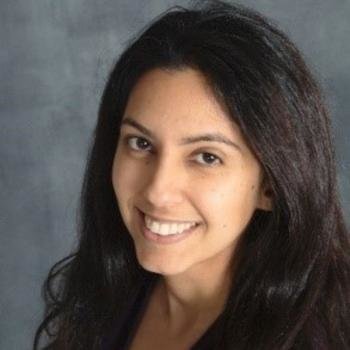Probing Earth’s Seafloor to Understand Space: Impact Craters, Plumes and True Polar Wander

Dr. Sonia Tikoo
Assistant Professor – Stanford
Department of Geophysics
Host: Dr. Samantha Bova
Wednesday, April 26, 2023
1 pm – CSL 422
Abstract
The phrase “the final frontier” has been used to describe both Earth’s seafloor as well as outer space. Scientific exploration of each domain requires tremendous effort, but the former is far more accessible than the latter in terms of cost and resources. As such, scientific ocean drilling, which enables sampling of Earth materials to depths of hundreds of meters to kilometers, presents an exciting avenue for studying processes that have taken place on multiple rocky worlds within our solar system at a scale that cannot currently be achieved with space missions. In this talk, we discuss how scientific ocean drilling can teach us about fundamental planetary processes including impact cratering, plume volcanism, and true polar wander.
In 2016, IODP-ICDP Expedition 364 drilled into the peak ring of the 200 km diameter Chicxulub impact crater (Yucatan Peninsula, Mexico). Chicxulub crater is exceptionally well-preserved compared to similarly large craters on Earth and is therefore an ideal analog for craters that formed on the early Earth and on other planetary bodies. Here we discuss how Expedition 364 has contributed to our knowledge of how large impact craters form and achieve their final structures. We also explore how vast post-impact hydrothermal systems within large craters may evolve into niche habitable environments. We pay emphasis to how paleomagnetism and rock magnetism can be used as a complement to traditional petrographic, structural, and modeling approaches to investigate the aforementioned topics.
This past year, IODP Expedition 391 sampled the Walvis Ridge (South Atlantic Ocean), which includes the Tristan-Gough hotspot tracks. These hotspot tracks were likely produced by plume volcanism, which is the primary mechanism of heat loss on planetary bodies that do not have plate tectonics. We present a preview of how studying the Walvis Ridge will provide insight into plume structure and geochemical evolution, and whether (within the past 100 million years) the Earth has experienced a significant solid-body rotation with respect to its spin axis known as True Polar Wander as Mars and the Moon have done in their pasts.
Sonia Tikoo is an Assistant Professor in the Department of Geophysics at Stanford University. Her research primarily focuses on the application of paleomagnetism to problems in the planetary sciences, including dynamo generation and evolution, geodynamics, and impact cratering processes. Sonia earned her Ph.D. in Planetary Sciences from the Massachusetts Institute of Technology. She served as a paleomagnetist on IODP-ICDP Expedition 364 Chicxulub Impact Crater and on IODP Expedition 391 Walvis Ridge Hotspot.

